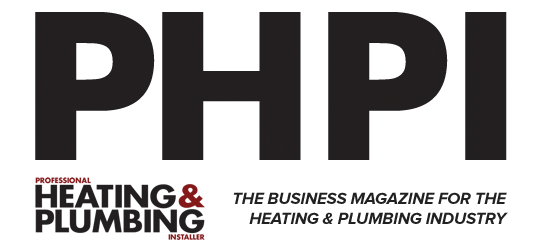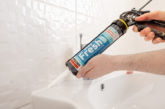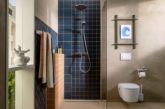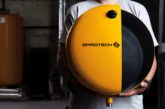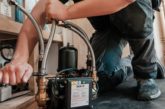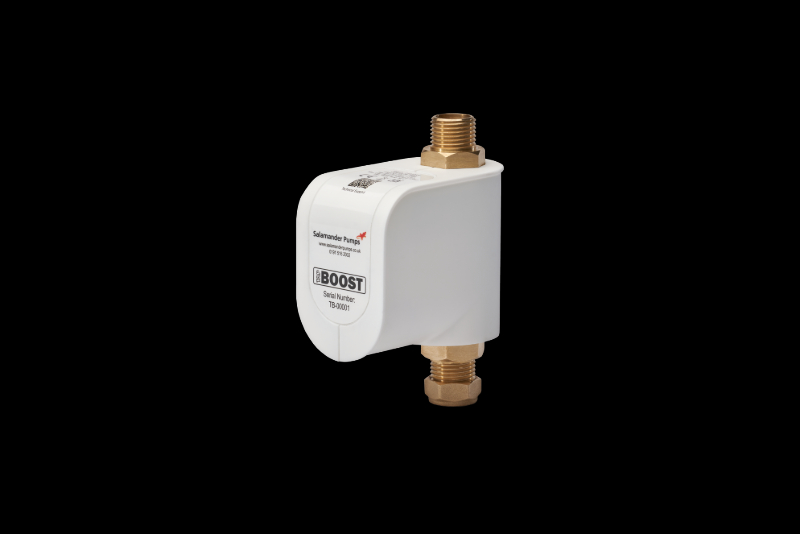
TapBoost, a water boosting product supporting single outlets, can be used to increase water pressure, but how can professionals best use it? Salamander Pumps Technical Training Manager Mike Oxley explains.
According to research from Salamander Pumps, 40% of households experience low water pressure daily. Whether it’s taps and showers dribbling, slow filling toilet cisterns or baths, it’s a significant inconvenience.
Why water challenges arise
To make the best use of TapBoost, the first step is identifying what’s behind flow and pressure challenges. There are multiple factors, often around water demand. For example, multiple outlets running concurrently exceeding mains capacity.
Occasionally, low mains water pressure and flow extends from a single household to a neighbourhood if all residents draw on the mains supply concurrently.
Sometimes, the plumbing system itself is behind challenges, often with older homes which have a gravity-fed heating and hot water system.
Yet newer houses utilising a mains fed system which relies on the supplier’s water pressure and flow alongside either a combi boiler or an unvented system are vulnerable.
In addition, pressure and flow challenges can arise after renovations across an entire household or single outlets.
Often this follows increasing the number of outlets whether it is kitchen upgrades, bathroom remodelling or en-suite installations expanding household water demands.
Pipe material, size, the number of fittings, valves and turns will all impact flow by potentially increasing friction.
Modern taps can also create problems, particularly if they are designed only for high pressure systems. Also, some modern tap designs are restrictive by nature, resulting in diminished flow in single outlets.
Renovation works on upper floors such as new outlets in loft conversions are vulnerable, not just through increased water demands, but also as water pressure struggles against the added height.
Post-renovation water flow challenges can be an uncomfortable customer conversation if they are unsatisfied after a potentially lengthy and costly project.
This illustrates why water flow and pressure challenges should always be top of mind for plumbing professionals.
What is TapBoost
To address single problematic outlets in households a single outlet inline pump is recommended.
TapBoost, which is part of Salamander Pumps’ MainsBooster range provides a quiet, lightweight, compact and easy to install solution for single outlets in domestic and light commercial buildings.
The solution improves the water flow of a single outlet to between 7-11 l/min depending on the natural flow rate coming into the pump. For example, with an incoming flow of 1 l/min, TapBoost will provide a 600% boost in flow while an 8 l/min flow will experience a boost of 25%.
TapBoost also operates at just 34.2 decibels, allowing it to be non-intrusive for occupants.
Supported outlets
In kitchens and bathrooms, whether it is a hot or cold tap, toilet, dishwasher or washing machine suffering from poor water flow, TapBoost provides significantly improved performance.
This applies to outlets in a mains or gravity-fed system. However, there must be a minimum natural flow rate of 1.2. l/min from any outlet to be boosted.
If a household is using an unvented system, TapBoost can only be installed to a cold water outlet.
Good practices
Once plumbing professionals have identified the system in use and if TapBoost will suit their needs, there are general considerations and good practices to keep in mind on top of the installation guidelines.
To start, the best possible location for TapBoost is directly before the single outlet to be boosted in a way to allow adequate airflow ventilation around the pump. This is helped by TapBoost’s compact and inline design and also means it can be installed either horizontally or vertically.
However, for optimum performance, a vertical fitting is advised. Be sure to never install TapBoost upside down or against the direction of flow.
A good practice is to fit a full bore isolating valve to the inlet pipework of the pump to facilitate any future maintenance.
In terms of safety instructions around installations for bathroom and washrooms, TapBoost can be installed in Zone 2 of a bathroom as set out in IET wiring regulations.
However, it is important that the electrical power supply unit is located beyond Zone 2 and ideally outside of the bathroom, protected from moisture and water. The plug must be located outside of the bathroom.
In installations where TapBoost is far away from a power source, a 5m low voltage extension lead is available, enhancing versatility and allowing a wider range of potential installation locations.
TapBoost accessories
To simplify the installation process of TapBoost, plumbing professionals can utilise the range of accessories. This includes a 15mm outlet compression fitting and a 15mm to 22mm conversion kit, to allow TapBoost to be installed to 22mm inlet and outlet pipework.

